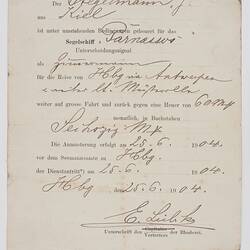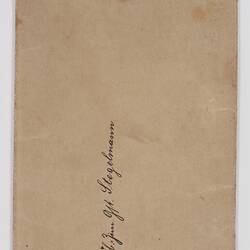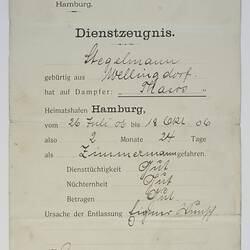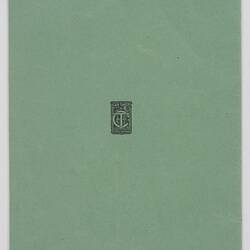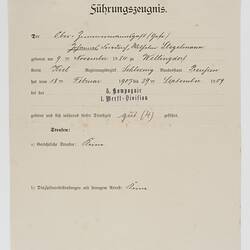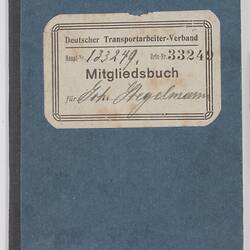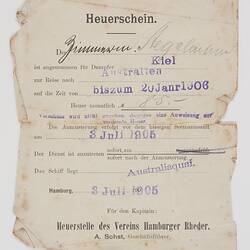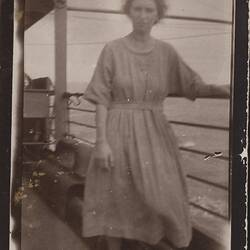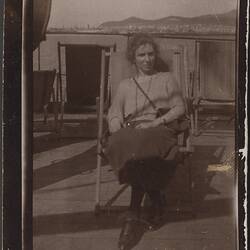Gladys Muriel Leichti was born in London on 13 January 1896. One of six children -she had four sisters and one brother- she grew up at 2 Brixton Road in Kennington near The Oval. Her father was a tinsmith, so there was not much money to go around, and Gladys worked mainly in domestic service, but also worked in a munitions factory during World War I and in a haberdashery shop.
On the 24 January 1924, at the age of 28, Gladys was one of 180 passengers brought out to Australia by the Salvation Army on the T.S.S. Bendigo. Originally, it was her younger sister Violet who had applied to migrate but she got 'cold feet' so Gladys decided to apply instead. She was one of 42 girls identified for domestic work. She paid around ten pounds for her fare and was given an identity certificate (not a passport) which she handed in upon arrival in Melbourne and it was never returned. She brought with her one trunk, a leather-bound sewing kit and a little hand luggage. During the voyage the T.S.S. Bendigo deposited passengers en route in Cape Town, Fremantle, Adelaide, Melbourne and Sydney.
On arrival in Melbourne Gladys went straight into service in Warrnambool, but did not enjoy it and returned to Melbourne after a few months. She found a live-in position as a cook with a family with two children in Melbourne and stayed there for four-five years, from about 1925 to 1930. One of the children, Geoffrey Neuman Morris, later became head of the Red Cross.
In May 1935 Gladys married German immigrant Johannes Stegelman. The couple lived in St Kilda and Prahran and had three children Margaret, Helen and Bruce.
Johannes (Jack) Stegelman was born in Germany on 9 November 1884 in Wellingdorf, Kiel. Between 1900 and 1904 he completed a shipwright's apprenticeship and became a carpenter on merchant vessels. Between 1907 and 1909 he spent time in the German Navy but then went back to working as a carpenter on merchant vessels. In 1911 he worked with the German Australian Steamship Company and when he was docked in Australia he, along with two others, jumped ship as he wanted to avoid being conscripted into the German navy again.
Jack 'went bush' and was an itinerant worker around Victoria and New South Wales during World War I. A Mr Bishop took him under his wing around 1922 and sponsored him so that he could remain in Melbourne. It was around this time that Jack joined the South Melbourne Football Club. He settled down as a carpenter and was naturalized in 1924. He was working at Clem Blunt's shipyard in Williamstown when war broke out.
His daughter Margaret remembers the police coming to the family home to check out her father but as he was over 50 and in an essential service, he was not interned as an enemy alien. During the war Jack worked at repairing ships and was often away for 6 weeks at a time. Margaret recalls having a difficult time during the war as the daughter of a German migrant and being called 'little Hun' by resentful neighbours.
Jack did not speak German at home, although he would speak German when reminiscing with his friend (who had jumped ship with him). Jack died on 16 November 1957. Gladys never returned to England, although her daughter offered to take her. She died on 15 August 1995.
More Information
-
Keywords
English Immigration, German Immigration, Assisted Immigration
-
Authors
-
Article types

